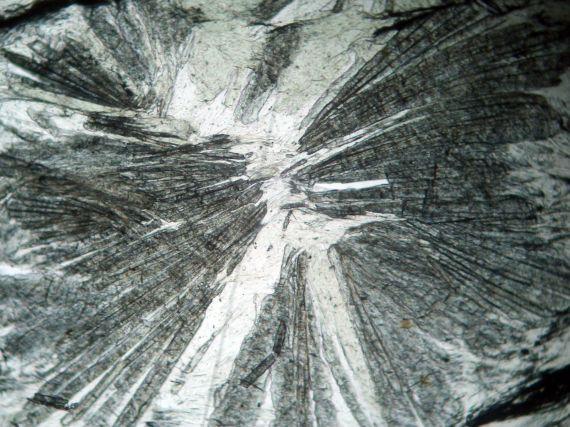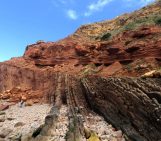Chloritoid is a metamorphic mineral commonly found inside phyllite rocks – which is shale (a type of mudstone containing clays, silts and muds) that has been metamorphosed several times. Confusingly, chloritoid does not actually contain the element chlorine but instead is an iron magnesium manganese alumino-silicate hydroxide. This particular specimen is from Lyon, France:

“Chloritoid discoman” by Emmanuelle Boutonnet. Chloritoid is a platy black mineral, which you can see under a microscope here.
In larger sized specimens chloritoid is shiny, black and platy, like this:

Chloritoid in crystalline form visible to the naked eye. (Credit: Rob Lavinsky/iRocks.com)
Lyon has a long and complex geological history, most importantly the Variscan Orogeny. The Variscan (also known as the Hercynian, just to be complicated) was an intense period of mountain building in the region brought on by the collision of two continents – Euramerica and Gondwana – to produce the well-known supercontinent of Pangea around 298 million years ago at the end of the period we call the Carboniferous.
The presence of chloritoid in the city of Lyon – the gateway to the Alps – is a sign of the intense changes experienced by the Earth several hundred million years ago.
By Jane Robb, EGU Educational Fellow
Imaggeo is the EGU’s open access geosciences image repository. A new and improved Imaggeo site will be launching soon, so you will be able to peruse an even better database of visually stunning geoscience images. Photos uploaded to Imaggeo can be used by scientists, the press and the public provided the original author is credited. Photographers also retain full rights of use, as Imaggeo images are licensed and distributed by the EGU under a Creative Commons licence. You can submit your photos here.

